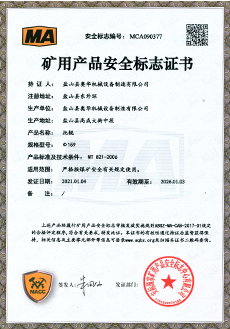 Afrikaans
Afrikaans  Albanian
Albanian  Amharic
Amharic  Arabic
Arabic  Armenian
Armenian  Azerbaijani
Azerbaijani  Basque
Basque  Belarusian
Belarusian  Bengali
Bengali  Bosnian
Bosnian  Bulgarian
Bulgarian  Catalan
Catalan  Cebuano
Cebuano  Corsican
Corsican  Croatian
Croatian  Czech
Czech  Danish
Danish  Dutch
Dutch  English
English  Esperanto
Esperanto  Estonian
Estonian  Finnish
Finnish  French
French  Frisian
Frisian  Galician
Galician  Georgian
Georgian  German
German  Greek
Greek  Gujarati
Gujarati  Haitian Creole
Haitian Creole  hausa
hausa  hawaiian
hawaiian  Hebrew
Hebrew  Hindi
Hindi  Miao
Miao  Hungarian
Hungarian  Icelandic
Icelandic  igbo
igbo  Indonesian
Indonesian  irish
irish  Italian
Italian  Japanese
Japanese  Javanese
Javanese  Kannada
Kannada  kazakh
kazakh  Khmer
Khmer  Rwandese
Rwandese  Korean
Korean  Kurdish
Kurdish  Kyrgyz
Kyrgyz  Lao
Lao  Latin
Latin  Latvian
Latvian  Lithuanian
Lithuanian  Luxembourgish
Luxembourgish  Macedonian
Macedonian  Malgashi
Malgashi  Malay
Malay  Malayalam
Malayalam  Maltese
Maltese  Maori
Maori  Marathi
Marathi  Mongolian
Mongolian  Myanmar
Myanmar  Nepali
Nepali  Norwegian
Norwegian  Norwegian
Norwegian  Occitan
Occitan  Pashto
Pashto  Persian
Persian  Polish
Polish  Portuguese
Portuguese  Punjabi
Punjabi  Romanian
Romanian  Russian
Russian  Samoan
Samoan  Scottish Gaelic
Scottish Gaelic  Serbian
Serbian  Sesotho
Sesotho  Shona
Shona  Sindhi
Sindhi  Sinhala
Sinhala  Slovak
Slovak  Slovenian
Slovenian  Somali
Somali  Spanish
Spanish  Sundanese
Sundanese  Swahili
Swahili  Swedish
Swedish  Tagalog
Tagalog  Tajik
Tajik  Tamil
Tamil  Tatar
Tatar  Telugu
Telugu  Thai
Thai  Turkish
Turkish  Turkmen
Turkmen  Ukrainian
Ukrainian  Urdu
Urdu  Uighur
Uighur  Uzbek
Uzbek  Vietnamese
Vietnamese  Welsh
Welsh  Bantu
Bantu  Yiddish
Yiddish  Yoruba
Yoruba  Zulu
Zulu Enhancing Performance with Drum Lagging Rubber for Optimal Grip and Efficiency in Machinery
Drum Lagging Rubber Understanding Its Importance in Industrial Applications
In industrial settings, the need for effective material handling and transportation is paramount. One critical component that plays a significant role in this process is drum lagging rubber. This specialized rubber material is employed primarily in conveyor systems, where it serves to enhance the performance and longevity of drums and pulleys.
Drum lagging refers to the process of applying a layer of rubber to the surface of a drum or pulley in a conveyor system. The lagging material effectively increases friction, which is essential for transmitting motion and preventing slippage between the belt and the drum. This is especially vital in heavy-duty applications where high loads and challenging conditions prevail.
One of the primary benefits of drum lagging rubber is its capacity to improve traction. In environments where material is being moved over long distances or at steep angles, maintaining grip is essential to prevent materials from rolling back or slipping. The added friction provided by the rubber lagging allows for smoother operation and minimizes the risk of accidents caused by slippage. As a result, companies can optimize their processes, reduce downtime, and enhance productivity.
drum lagging rubber

Moreover, drum lagging rubber offers outstanding durability and resistance to wear and tear. Industrial settings often expose equipment to harsh conditions, including abrasion, extreme temperatures, and exposure to chemicals. High-quality drum lagging materials are engineered to withstand these challenges, ensuring that they maintain their effectiveness over time. This longevity helps companies save on replacement costs and reduces maintenance requirements, further contributing to operational efficiency.
Additionally, drum lagging rubber can contribute to noise reduction in conveyor systems. Traditional metal drums can generate significant noise during operation, which can be detrimental to workplace comfort and safety. The use of rubber lagging helps to dampen vibrations and reduce the overall noise levels of machinery, creating a more conducive work environment.
There are several types of drum lagging rubber available, each designed for specific applications and conditions. For example, some rubber lagging is designed with enhanced grip for wet or slippery environments, while others may be formulated to resist high temperatures or chemical exposure. Selecting the right type of drum lagging rubber is crucial for achieving optimal performance in any given application.
In conclusion, drum lagging rubber is an indispensable component in various industrial applications, offering improved traction, durability, and noise reduction. Its importance cannot be overstated, as it significantly contributes to the efficiency and safety of material handling systems. For anyone involved in the maintenance or operation of conveyor systems, understanding the benefits of drum lagging rubber is essential in ensuring that equipment operates at peak performance while maximizing longevity. Investing in high-quality lagging materials can lead to considerable long-term savings and operational improvements in any industrial setting.
-
Revolutionizing Conveyor Reliability with Advanced Rubber Lagging PulleysNewsJul.22,2025
-
Powering Precision and Durability with Expert Manufacturers of Conveyor ComponentsNewsJul.22,2025
-
Optimizing Conveyor Systems with Advanced Conveyor AccessoriesNewsJul.22,2025
-
Maximize Conveyor Efficiency with Quality Conveyor Idler PulleysNewsJul.22,2025
-
Future-Proof Your Conveyor System with High-Performance Polyurethane RollerNewsJul.22,2025
-
Driving Efficiency Forward with Quality Idlers and RollersNewsJul.22,2025





























